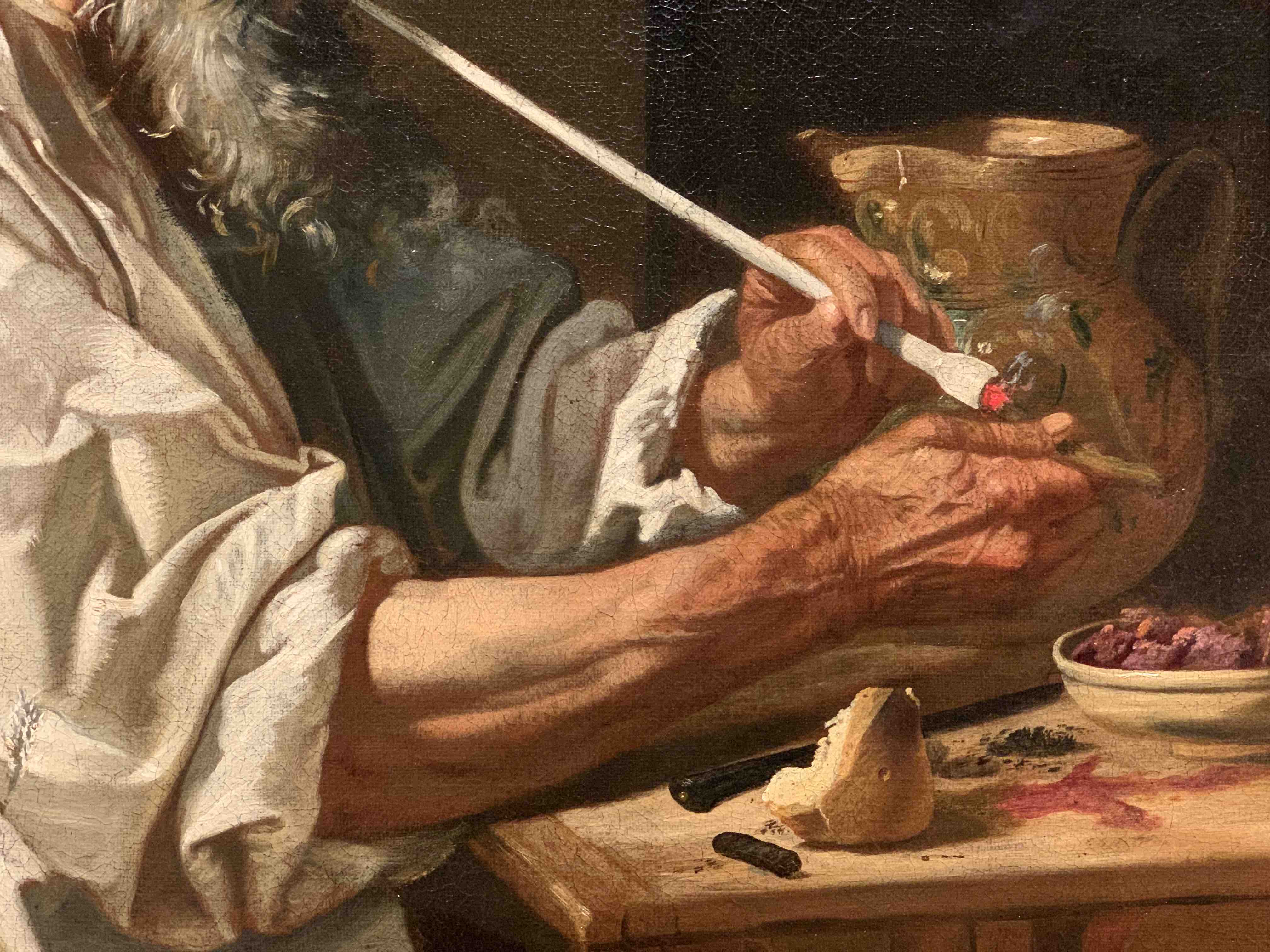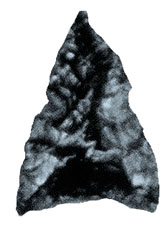|
Ixtlán Del Rio (archaeological Site)
Ixtlán del Rio is an archaeological site located in the Ixtlán del Rio municipality, on the south west region of the Mexican state of Nayarit. It is also known as "Los Toriles" and contains the only vestiges of the western cultures in Nayarit. The presence of prehispanic vestiges in the form of petroglyphs are registered in five areas, the most important are "El Terrero", "Sayulapa" and "El Veladero", which depict Sgraffito, sgraffiti lines and representations of abstract figures, such as spirals with rays. Of the traditional Shaft Tombs, five large concentration areas are identified, containing human bone remains; domestic pottery ollas, Comal (cookware), comales and cantaros (pitchers)]; as well as sculpture type remains (human and animal figures). Background In remote times in which early American settlers crossed the Behring Strait, several sedentary groups migrated south. The territory of present-day Nayarit State has manifestations of those settlers, chronologically and c ... [...More Info...] [...Related Items...] OR: [Wikipedia] [Google] [Baidu] |
Ixtlán Del Rio
Ixtlan may refer to: *Ixtlán, Michoacan, Mexico *Ixtlán del Río, Nayarit, Mexico **Ixtlán del Rio (archaeological site) *Ixtlán de los Hervores, Michoacán, Mexico *Ixtlán de Juárez, Oaxaca, Mexico *Ixtlán District, Oaxaca, Mexico *Radio Ixtlan, a 2004 record by the music group Ewigkeit See also * ''Journey to Ixtlan'', a book by Carlos Castaneda * {{disambiguation, geo ... [...More Info...] [...Related Items...] OR: [Wikipedia] [Google] [Baidu] |
Tequila, Jalisco
Santiago de Tequila (; "place of tribute") is a Mexican town and municipality located in the state of Jalisco about 60 km from the city of Guadalajara. Tequila is best known as being the birthplace of the drink that bears its name, "tequila," which is made from the blue agave plant, native to this area. The heart of the plant contains natural sugars and was traditionally used to make a fermented drink. After the Spanish arrived, they took this fermented beverage and distilled it, producing the tequila known today. The popularity of the drink and the history behind it has made the town and the area surrounding it a World Heritage Site. It was also named a " Pueblo Mágico" (Magical Town) in 2003 by the Mexican federal government. The coat of arms of the municipality was officially adopted on 31 December 1983 by the municipal council. It contains the Latin phrase ALMA LAETA NOBILIS, meaning "cheerful and noble soul". Its representative symbols include the tower of the main ch ... [...More Info...] [...Related Items...] OR: [Wikipedia] [Google] [Baidu] |
Huichol People
The Huichol () or Wixárika () are an Indigenous people of Mexico living in the Sierra Madre Occidental range in the states of Nayarit, Jalisco, Zacatecas, and Durango, with considerable communities in the United States, in the states of California, Arizona, New Mexico, and Texas. They are best known to the larger world as the ''Huichol'', although they refer to themselves as ''Wixáritari'' ("the people") in their Huichol language. The adjectival form of ''Wixáritari'' and name for their own language is ''Wixárika''. The Wixárika speak a language of the Wixarikan group that is closely related to the Nahuatl group. Furthermore, they have received Mesoamerican influences, which is reflected by the fact that Wixarika has features typical to the Mesoamerican language area. Their spirituality traditionally involves collecting and consuming peyote ('' Lophophora williamsii''), a cactus that possesses hallucinogenic effects due to its psychoactive alkaloids, such as mescaline. Loc ... [...More Info...] [...Related Items...] OR: [Wikipedia] [Google] [Baidu] |
Cora People
The Cora are an Indigenous ethnic group of North Western Mexico which live in the municipality El Nayar, Rosamorada, Ruiz, Tepic, in the Mexican state of Nayarit, Mezquital in Durango and in a few settlements in the neighboring state of Jalisco. They call themselves ''náayerite'' (plural; ''náayeri'' singular), whence the name of the present day Mexican state of Nayarit. They reside within a series of ''comunidades indígenas'' (colonial land grants) and '' ejidos'' (contemporary agricultural communes). The 2000 Mexican census reported that there were 24,390 people who were members of Cora-speaking households, these being defined as households where at least one parent or elder claims to speak the Cora language. Of these 24 thousand, 67 percent (16,357) were reported to speak Cora, 17 percent were nonspeakers, and the remaining 16 percent were unspecified with regard to their language. The Cora cultivate maize, beans, and amaranth and they raise some cattle. History T ... [...More Info...] [...Related Items...] OR: [Wikipedia] [Google] [Baidu] |
Ancestor Pair MET DT210536
An ancestor, also known as a forefather, fore-elder, or a forebear, is a parent or (recursion, recursively) the parent of an antecedent (genealogy), antecedent (i.e., a grandparent, great-grandparent, great-great-grandparent and so forth). ''Ancestor'' is "any person from whom one is descended. In law, the person from whom an estate (law), estate has been inheritance, inherited." Relationship Two individuals have a genetics, genetic relationship if one is the ancestor of the other or if they share a common ancestor. In evolutionary theory, species which share an evolutionary ancestor are said to be of common descent. However, this concept of ancestry does not apply to some bacteria and other organisms capable of horizontal gene transfer. Some research suggests that the average person has twice as many female ancestors as male ancestors. This might have been due to the past prevalence of Polygyny, polygynous relations and female hypergamy. Assuming that all of an individual's ... [...More Info...] [...Related Items...] OR: [Wikipedia] [Google] [Baidu] |
Petroglyph
A petroglyph is an image created by removing part of a rock surface by incising, picking, carving, or abrading, as a form of rock art. Outside North America, scholars often use terms such as "carving", "engraving", or other descriptions of the technique to refer to such images. Petroglyphs, estimated to be 20,000 years old are classified as protected monuments and have been added to the tentative list of UNESCO's World Heritage Sites. Petroglyphs are found worldwide, and are often associated with prehistoric peoples. The word comes from the Greek prefix , from meaning " stone", and meaning "carve", and was originally coined in French as . In scholarly texts, a ''petroglyph'' is a rock engraving, whereas a '' petrograph'' (or ''pictograph'') is a rock painting. In common usage, the words are sometimes used interchangeably. Both types of image belong to the wider and more general category of rock art or parietal art. Petroforms, or patterns and shapes made by man ... [...More Info...] [...Related Items...] OR: [Wikipedia] [Google] [Baidu] |
Nahuatlaca
The Nahuas ( ) are a Uto-Nahuan ethnicity and one of the Indigenous people of Mexico, with Nahua minorities also in El Salvador, Guatemala, Honduras, Nicaragua, and Costa Rica. They comprise the largest Indigenous group in Mexico, as well as the largest population out of any North American Indigenous people group who are native speakers of their respective Indigenous language. Amongst the Nahua, this is Nahuatl. When ranked amongst all Indigenous languages across the Americas, Nahuas list third after speakers of Guaraní and Quechua. The Mexica (Aztecs) are of Nahua ethnicity, as are their historical enemies and allies of the Spaniards: the Tlaxcallans (Tlaxcaltecs). The Toltecs which predated both groups are often thought to have been Nahua as well. However, in the pre-Columbian period Nahuas were subdivided into many groups that did not necessarily share a common identity. Their Nahuan languages, or Nahuatl, consist of many variants, several of which are mutually unintellig ... [...More Info...] [...Related Items...] OR: [Wikipedia] [Google] [Baidu] |
Molcajete
A ''molcajete'' (; Mexican Spanish, from Nahuatl '' molcaxitl'') and ''tejolote'' (from Nahuatl ''texolotl'') are stone tools, the traditional Mexican version of the mortar and pestle, similar to the South American batan, used for grinding various food products. Description The ''molcajete'' was used by pre-Hispanic Mesoamerican cultures, including the Aztec and Maya, stretching back several thousand years. Traditionally carved out of a single block of vesicular basalt, ''molcajetes'' are typically round in shape and supported by three short legs. They are frequently decorated with the carved head of an animal on the outside edge of the bowl, giving the ''molcajete'' the appearance of a short, stout, three-legged animal. The pig is the most common animal head used for decoration of this type. In the pre-Hispanic Mesoamerican period, the ''molcajete'' had a lid and the set was believed to be used for burial of members in society of high status. Additionally, throughout the ... [...More Info...] [...Related Items...] OR: [Wikipedia] [Google] [Baidu] |
Nahuatl
Nahuatl ( ; ), Aztec, or Mexicano is a language or, by some definitions, a group of languages of the Uto-Aztecan language family. Varieties of Nahuatl are spoken by about Nahuas, most of whom live mainly in Central Mexico and have smaller populations Nahuatl language in the United States, in the United States. Nahuatl has been spoken in central Mexico since at least the seventh century CE. It was the language of the Mexica, who dominated what is now central Mexico during the Late Postclassic period of Mesoamerican chronology, Mesoamerican history. During the centuries preceding the Spanish conquest of the Aztec Empire, the Aztecs had expanded to incorporate a large part of central Mexico. Their influence caused the variety of Nahuatl spoken by the residents of Tenochtitlan to become a prestige language in Mesoamerica. Following the Spanish conquest, Spanish colonists and missionaries introduced the Latin script, and Nahuatl became a literary language. Many chronicles, gram ... [...More Info...] [...Related Items...] OR: [Wikipedia] [Google] [Baidu] |
Smoking Pipe
A smoking pipe, often simply referred to as a pipe, is used to inhale (or taste) the smoke of a burning substance, typically (though not exclusively) used to consume a Psychoactive drug, psychoactive substance; this most commonly refers to a tobacco pipe, however it can also refer to a cannabis Bowl (smoking), pipe (bowl). Pipes are commonly made from Erica arborea#Uses, briar, Ericaceae, heather, maize, corncob, meerschaum, clay, cherry, glass, porcelain, ebonite and acrylic resin, acrylic. Dutch pipe smoking During the 17th century, pipe smoking became a new trend among the Dutch young, in specific the upper and middle class students. These students copied the Spain, Spanish sailors and soldiers in the area by joining them in participation of pipe smoking. In particular they were interested in the novelty it brought, which was the taste of smoke. However, the only way to smoke tobacco was through a pipe. Popularity grew throughout and became a mainstream habit for the Dutch ... [...More Info...] [...Related Items...] OR: [Wikipedia] [Google] [Baidu] |
Obsidian Use In Mesoamerica
Obsidian is a naturally formed volcanic glass that was an important part of the material culture of Pre-Columbian Mesoamerica. Obsidian was a highly integrated part of daily and ritual life, and its widespread and varied use may be a significant contributor to Mesoamerica's lack of metallurgy. Lithic and contextual analysis of obsidian, including source studies, are important components of archaeological studies of past Mesoamerican cultures and inform scholars on economy, technological organization, long-distance trade, ritual organization, and socio-cultural structure. Production techniques Due to its glassy internal structure, obsidian is relatively easy to work, as it breaks in very predictable and controlled ways via conchoidal fracturing. This contributed to its prolific use throughout Mesoamerica. It is obtained by either quarrying source sites or in nodule form from riverbeds or fractured outcrops. Following the removal of cortex (when applicable), bifacial, uni ... [...More Info...] [...Related Items...] OR: [Wikipedia] [Google] [Baidu] |




